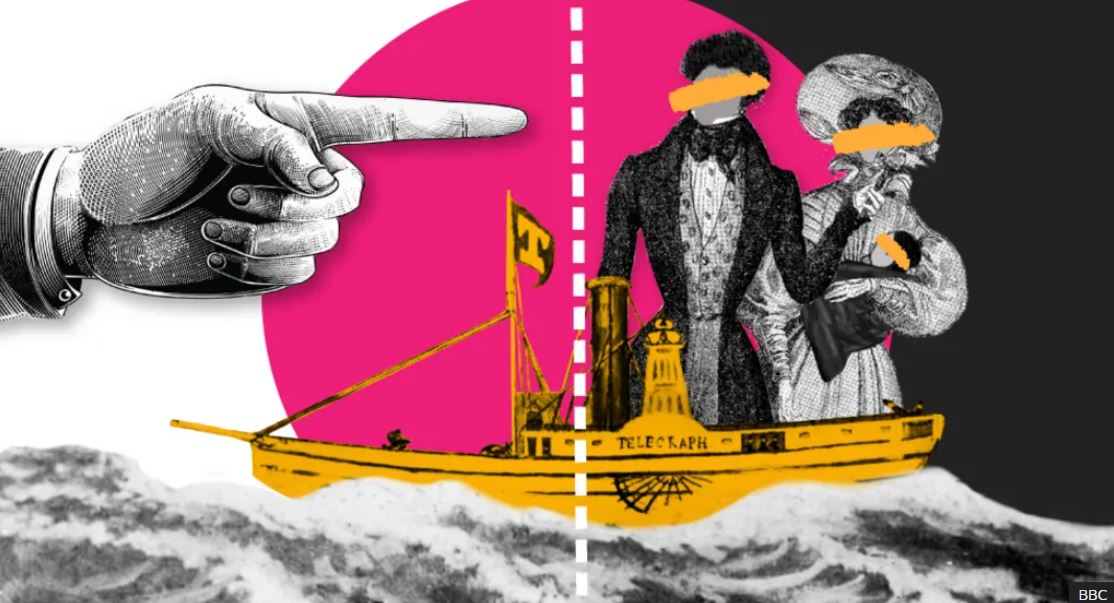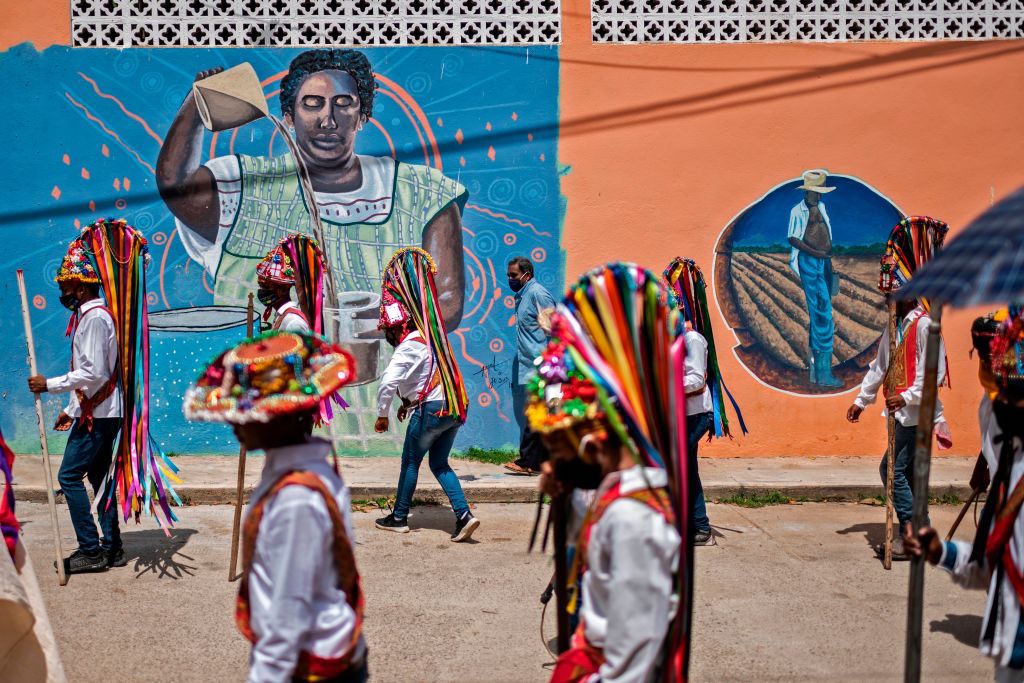(UnidosUS) —
This year UnidosUS commemorates Juneteenth elevating the rich and overlapping experiences of African Americans and Afro Latinos throughout the Western Hemisphere.
By: Viviana López Green, UnidosUS Senior Director, Racial Equity Initiative
OVERVIEW
Of course, for Latinos/Latin Americans, “America” encompasses the entire Western Hemisphere. Latin America and the Caribbean are home to the highest population of people with African ancestry outside of Africa, up to 70% of the population in some countries. As a single nation, Brazil, which had the largest number of enslaved people brought from the African continent, now has the densest population of individuals of African ancestry. But, every Spanish and Portuguese colonial city had enslaved people. In the U.S. today, close to 25% of Latinxs identify themselves as Afro-Latinx, and their ancestors were enslaved in both the United States and Latin America.
Most Latin American countries abolished slavery prior to the U.S., by around 1850, as part of their independence movements, except for Brazil and Cuba, where abolition didn’t arrive until the late 1880s. In the U.S., while the Emancipation Proclamation was signed in 1863, it wasn’t until June 19, 1865 – what came to be known as Juneteenth – that General Order No. 3 was issued in Galveston, TX, informing enslaved people in that state that they were free.
In this blog, we hope to shed a sliver of light on the expanse of shared history and experiences of abolition and emancipation and how Afro-Latinos from Latin America and the Caribbean were key figures in the fight against slavery, segregation and racism across the hemisphere.
AFRO-LATINO ABOLITIONISTS
Emiliano Mundrucu: It was this Brazilian-born soldier, abolitionist, and civil rights activist, Emiliano Mundrucu, who became the first plaintiff in a lawsuit to test segregation in transportation in the United States, a decade before Frederick Douglass’s resistance act of entering a whites-only railcar in Massachusetts. After participating in rebellions for Afro-Brazilian independence in the state of Pernambuco, Mundrucu fled his native country – by way of Venezuela and Haiti – landing in Boston, where he met his wife, Harriet.
In 1832, the couple and their one-year-old daughter, Emiliana, took a steamboat, The Telegraph, up the Massachusetts coast to Nantucket. During the trip, Harriet and Emiliana attempted to access the ladies’ whites-only cabin but were denied despite having paid the highest ticket price, which the Mundrucus argued should have granted them full access to accommodations on board. Slavery had been abolished in Northern states by this time, though it was still legal in the South. However, racist/segregationist practices and policies were being implemented in the North.
The Mundrucus took legal action, suing the steamboat captain, Edward Barker, for discrimination. In 1833, the Mundrucu v. Barker case came before a jury in Boston, which found Barker in breach of contract since he had not made known that the amenities corresponding to the ticket class were only for white passengers. Unfortunately, though unsurprisingly, federal courts ultimately overturned that decision in favor of Barker. But the case is monumental given the history of the time
Upon settling in Boston, Mundrucu became an active member of Boston’s abolitionist and Black rights groups, including the New England Anti-Slavery Society (NEASS).
Mundrucu lived to celebrate President Lincoln’s signing of the Emancipation Proclamation, which freed enslaved people in the Southern states, and he did so alongside Frederick Douglass and other prominent African American abolitionists at a meeting of the Union Progressive Association, a mostly Black abolitionist group of which Mundrucu was vice president.

Mundrucu died that same year, in 1863, and by that time, he and Harriet “…were well-respected by their fellow Bostonians, black and white,” according to historian Lloyd Belton. “Mundrucu’s story shows us just how connected the Americas were at that time. Brazil was connected to Venezuela, Venezuela to Haiti, [and] Haiti to the USA. These Black activists were very mobile. They could travel, they could speak various languages…And he was not the only one. There were other Black immigrants from South America, the Caribbean, who were in Boston, New York, or Philadelphia, and they were involved in these activist communities which were very cosmopolitan.”
Ramón Emeterio Betances: Considered the father of Puerto Rican Independence – El Padre de la Patria – Betances, born in Cabo Rojo, was the son of Dominican and Puerto Rican parents and was of mixed racial ancestry. A doctor and surgeon, having earned his medical degree at the University of Paris, he also became known as El Padre de los Pobres (The Father of the Poor) because he dedicated much of his practice to treating the poor in Puerto Rico.
A resolute abolitionist, he, along with other activists, founded a clandestine civic organization in 1856 dedicated to the liberation of enslaved people on the island, the Secret Abolitionist Societies. Each society approached the shared mission differently, and Betances’s group bought the freedom of many children born into slavery. This activity led to the Spanish colonial government exiling him on various occasions. In 1867, he fled to the Dominican Republic, where he founded and led the Revolutionary Committee of Puerto Rico and–, the following year, planned “El Grito de Lares,” the first armed rebellion against colonial rule on the island. The effort failed, and Betances fled to New York, where he continued to work with other revolutionary leaders toward independence for Puerto Rico, Cuba, and the Dominican Republic.
A prolific writer, while in exile, he wrote the seminal proclamation Los Diez Mandamientos de los Hombres Libres (the Ten Commandments of Free Men), which called for the abolition of slavery and the right to freedom of speech, worship, and elections. While Betances spent his final years outside of his homeland, he lived to see the fruits of his and his compatriots’ labor when, on March 22, 1873, the Spanish National Assembly (the island was still a colony) finally abolished slavery in Puerto Rico.
EMANCIPATION CELEBRATIONS
- Puerto Rico –the island celebrates its Día de la Abolición de Esclavitud (Emancipation Day) on March 22, which is an official holiday. Similar to Juneteenth, Emancipation Day honors the history of the African diaspora and the people and leaders, like Betances – among others – who fought for freedom and justice. Puerto Ricans mark the consequential date with traditional cuisine, music, song, and dance – the plena and bomba.
- Nacimiento de los Negros, Coahuila, Mexico – The Afro-Mexican town of El Nacimiento de los Negros, about 100 miles from the Texas border, has celebrated Juneteenth since as early as the 1870s. That’s because in the 1800s, many Black Seminoles – who were formerly enslaved people who escaped bondage and aligned themselves with Indigenous Seminoles of Florida to fight the U.S. in the Seminole wars – were forced to relocate to designated Indian Territory in Oklahoma. During that time, John Horse, who was of Indigenous and Black ancestry, led a group of Black Seminoles and Native Americans to Mexico, where slavery had been abolished 20 years earlier, and settled in El Nacimiento in 1852.

An estimated 3,000 to 5,000 people crossed the border from the 1830s up to emancipation to secure their freedom and escape slavery, creating what is known as the Southern Underground Railroad.
Today, the town is home to descendants of the Black Seminoles, Afro-Indigenous families known as Mascogos, and they have celebrated Dia de Los Negros on June 19th for about 150 years. The commemorative festivities – music, dance, and food – combine Indigenous, Black, and Mexican cultural influences, as well as a parade of horseback riders, the cabalgata.
LEGACY
Of course, we must acknowledge that the end of slavery did not equate to meaningful social equity or access to opportunities for formerly enslaved people and their descendants. It took the U.S. another hundred years to address the segregationist policies – like those that Emiliano Mundrucu first took on – through the Civil Rights Movement. However, many of the same issues persist today. Latin America has also experienced a similar historical trajectory.
However, celebrating emancipation and honoring the heroes who made it possible in the U.S. and throughout the Americas serve as a shared reminder of the resilience of African Americans and Afro-Latinos and of our deeply interconnected history and present. Juneteenth is an opportunity for all Americans to celebrate that resilience and the contributions of those heroes toward a more equal, just society. It’s an opportunity to celebrate solidarity and the hope and pride that the African diaspora holds for its ancestors and the future.
To learn more, here are some enlightening resources:
Special thanks to UnidosUS’s Racial Equity Initiative Advisor, José Gregory, A.P. U.S. History Teacher at Marist School, and College Board Consultant, for his guidance and insight on this post.
—
Read More News from UnidosUS
